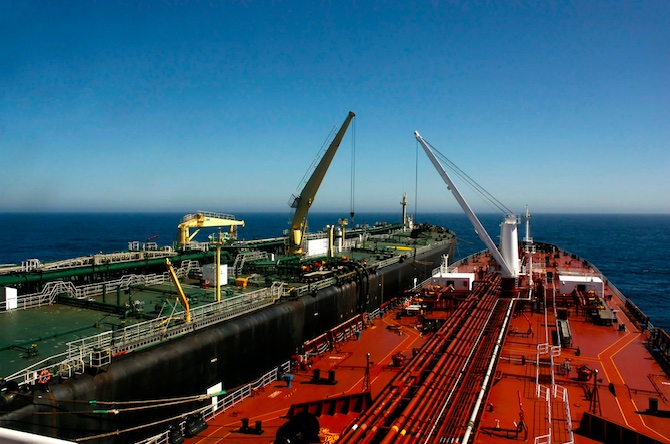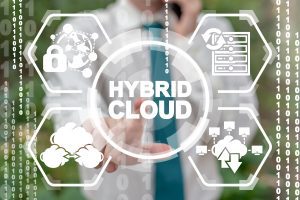Future Proofing Shipping Against the Next Crisis

Turbulence across global supply chains is nothing new. But escalating geopolitical conflict and unpredictable weather events are raising the risks for ships, crew and cargo, demanding new levels of awareness and speed of response from both Masters and shipping owners. At the same time, the maritime industry faces an array of new challenges, from crew shortages to emissions management and the evolution to green shipping.
Yet the biggest risk facing every vessel is still human interaction: working at sea remains one of the most dangerous professions. The maritime industry has access to an extraordinary array of data resources that enable efficient tracking, security, route optimisation, a better understanding of weather and forecasting, charter party compliance, ship performance, and emissions. Data can transform vessel and crew safety. Digital systems can transform efficiency, enable highly effective preventative maintenance and eradicate tedious administrative tasks for senior crew members.
However, with the vast majority of safety incidents the result of failure to follow rules, regulations and procedures; of mistrusting or overriding information, the maritime industry needs to embrace cultural change and demonstrate the power of data to transform crew safety and well-being. As Captain Steve Bomgardner, Vice President – Shipping & Offshore, Pole Star Global, argues, leveraging digitisation and using data to transform the experience of crew members at every level of the on-board operation will rapidly embed information value within the industry and overcome the dangerous mistrust that can lead to catastrophic disasters.
Safety First
Shipping companies globally are waking up to the need to improve both their data resources and the way information is being used. There is a growing recognition of the constraints of siloed, legacy data systems and the risks to safety, efficiency and responsiveness created by a lack of trusted, real-time data. Far too many major disasters and day-to-day incidents could and should have been avoided with better, up to date data – such as the outdated weather information that led to the loss of the El Faro and crew.
Given the enormous pressure on vessels to hit deadlines and avoid delays at ports, crews will inevitably push the boundaries if there is no oversight. There is a reluctance to reroute, due to weather or conflict, given the inevitable delays and added costs. When rerouting could also further delay shore leave or even postpone the end of contract for a crew that has been at sea for up to 18 months, a desire to maintain the schedule can lead to underplaying risk assessments.
Yet the depth of data now available to companies is not just informing efficiency and performance decisions, it is at the heart of building a safer working environment. For example, speed and fuel consumption curves are not simply monitoring engine efficiency; they can flag if the engine is not burning fuel properly. Timely use of information can not only reduce the risk of oil leak or hydrocarbon failure that could cause crew casualties and/or environmental disaster; but also support preventative maintenance that radically reduces the risk of engine failure, avoiding tedious and expensive delays in dry dock while the problem is fixed.
Cultural Shift
However, simply collecting data is not enough to safeguard vessels and crew. The maritime industry only needs to look at the Deepwater Horizon disaster to understand that adding data alone is not enough. That was one of the most connected, data enabled vessels of its time, yet data mistrust and human interaction led to the explosion that caused the death of 11 crew and the world’s most devastating oil spill.
Today, even when crew have data, its value is often not recognised or understood. Senior crew members spend more time in meetings, creating and reviewing documentation than being hands on. Many perceive any onshore oversight of engine performance or fuel consumption as punitive rather than supportive. As a result, some perceive data and systems as a distraction and burden rather than a vital support in improving safety and efficiency.
To truly utilise joined up information, crew need a better way of interpreting multiple data feeds. They need to see how digitisation and data supports their day-to-day activity and enhances rather than detracts from core activities. Critically, there needs to be a cultural shift and a recognition that providing a central onshore team with an immediate and complete overview of onboard activity is an important second line of defence against incidents and disaster.
Crew Experience
To maximise the value of the extraordinary array of information now available to shipping companies, it is essential to change attitudes to data on board – and that can only be achieved through better education and training and, critically, the delivery of tools that truly improve the day-to-day working experience. Prioritising vessel safety and crew well-being is a key step in changing onboard attitudes to digitisation and data.
For example, one person should not have the burden of deciding whether or not a sensor is faulty; of making the decision to ignore or assume a reading is false. Replacing a single isolated view of the operation with a joined-up perspective can transform onboard understanding of an evolving risk. In addition to improving vessel security, better systems can reduce the tedious administrative overload faced by senior crew members, such as automated digital permit to work systems, to enable more time to be focused on sailing the vessel and avoiding hazards. This not only improves efficiency but massively boosts morale, which is becoming a significant concern on board many vessels.
Of course, data costs remain a challenge. The cost of high-speed internet when out at sea is prohibitive and many ship owners cannot justify an investment in super connected vessels armed with sensors. That is where hardware free voyage optimisation systems can also provide a solution, delivering fleet monitoring, regulatory compliance, performance analytics and voyage optimisation in a single view. Even without dedicated hardware, both onboard crew and onshore teams have the additional insight required to boost safety and security.
Conclusion
Irrespective of whether the next crisis for ship owners is war, weather or another global health event, one fact is ineluctable: recruiting onboard crew is becoming difficult. With limited shore time and contracts that become ever longer, morale is a big issue on board. The job can be both mundane and high risk. Every day there is an issue, from sickness to fire, grounding or emergency response. Digitisation and information will enable ship owners and Masters to improve decision making and responsiveness but that can only be achieved by focusing on crew safety and morale to foster a trust in data.
When crew recognise that data will enhance the day-to-day working experience, that preventative maintenance and improved weather knowledge reduces risk, and that automated systems can remove the burden of administrative tasks, the response will be overwhelming. Reducing stress and boosting morale will improve crew performance. It will mean vessels move at a better pace and that cargo arrives on time and safely. Data can and must be used to safeguard shipping and create happy seafarers, supported with the information they need to respond effectively to the next crisis.
